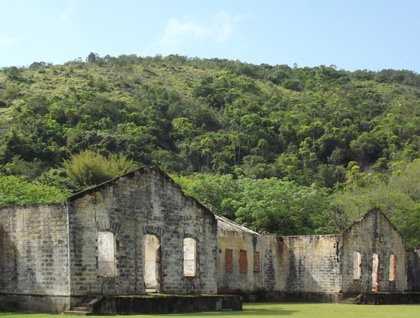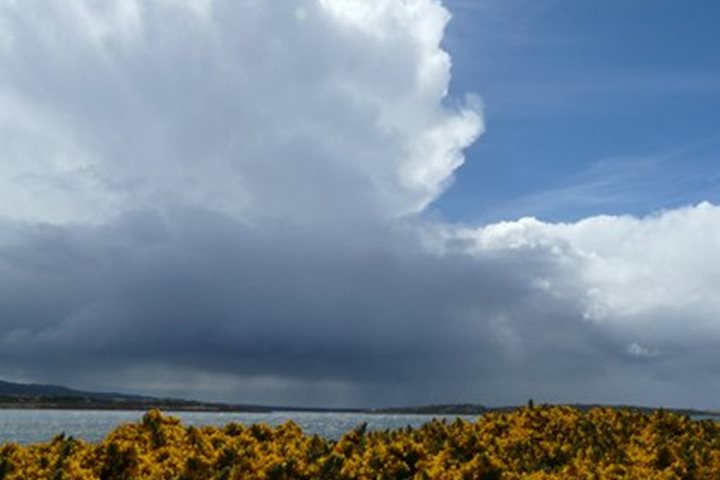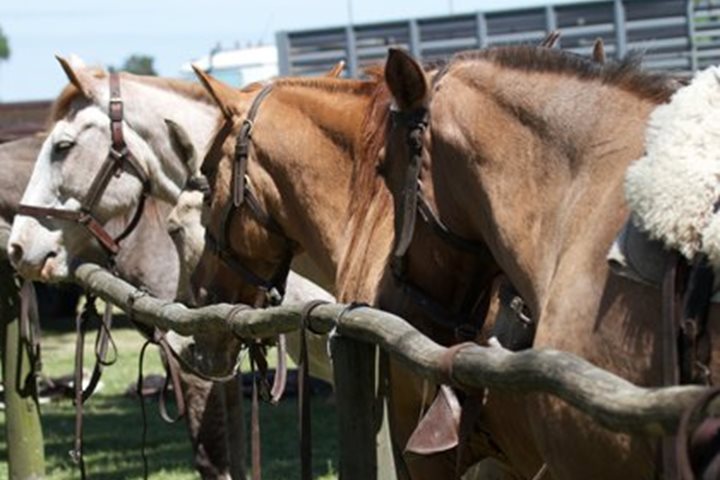Very early this morning, at precisely 01:45, we crossed the Tropic of Capricorn and officially entered into temperate waters. Fortunately, there were no officials to deal with at this time. It was probably just a coincidence that conditions were a little cooler this morning and in fact had nothing to with our leaving the tropics.
A few hours later, National Geographic Explorer reached her anchorage at the idyllic little island known as Anchieta. This beautiful site was once an infamous Brazilian penal island (similar to French Guiana’s Devil Island). For the first half of the 20th century, Ilha de Anchieta was used to isolate political prisoners, but was closed down after a deadly prison riot in the mid-1950s. It is now a state park in the state of São Paulo and thus gives protection to the island and all the surrounding waters. Although the ruins of the old prison buildings still exist, forest has reclaimed most of the island and the park personnel have established and continually maintain some excellent hiking trails for nature enthusiasts, such as us.
We were fortunate to have received special permission to visit the park before it officially opened this morning to the general public. Local guides from the nearby town of Ubatuba, located on the mainland coast, met us on the concrete pier and from there showed us around on trails and within the prison ruins, and explained the sordid history of the island. Of course, some people simply enjoyed the isolated beaches on their own. The island is of granitic origins and we marveled at the coarse, large-crystalline composition of the rocks that were exposed within the forest and along the shoreline. The forest contains several types of habitats, but everything here is obviously secondary growth. Those of us who explored the trails were rewarded with close-up views of spectacular accumulations of bromeliads of all sizes growing upon the trees.
The bird watchers counted up an impressive list of species, starting with the many frigatebirds and vultures constantly flying overhead, as well as many more forest birds, including various raptors, pigeons, hummingbirds, flycatchers, foliage-gleaners, thrushes, swallows, manakins, wrens, warblers, and sparrows. Several interesting land animals were also observed, including marmosets, coatimundis, agoutis, capybaras, and a few unseen noisy creatures in the underbrush.
The wide, flat beaches exhibited some wonderful designs in the fine sand as the tide had gone out, attracting the photographers among us. As expected, Ilha de Anchieta is a popular holiday spot for people living in São Paulo and just as we were leaving the island in the late morning, a large day-tripper boat came into the bay and disgorged several dozen fun-loving, beach-seeking Brazilians.
The rest of the day was spent at sea. During lunch, we passed close by mountainous Ilha de São Sebastião, and then sailed away from the coastline and lost sight of land…except for a distant view of Ilha de Alcatrazes (an island we suspected is a seabird nesting site, but off limits to us because it is a military site). The waters we sailed in today are quite shallow, covering part of the South American continental shelf, and looking on the chart, we could see the bottom is also very flat, varying between 55 and 60 meters (180 – 200 feet) in depth.
In the early afternoon, we were entertained with another amazing film by Emmy-winner David Wright (this one about black bears in Minnesota), and a little later we had our second performance by Brazilian singer Luisa Maita and her three-piece band. She is a beautiful young woman with a wonderful voice and a talent for songwriting…it is no wonder she is one of the most popular singers in Brazil today.







